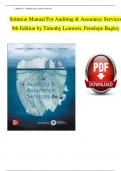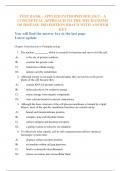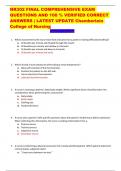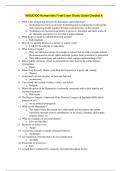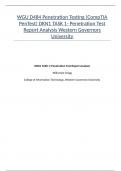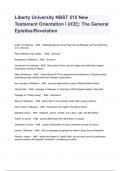Exam (elaborations)
Solution Manual For Louwers, Auditing and Assurance Services 9th Edition, Verified Chapters 1 - 12, Complete Newest Version
- Module
- Institution
- Book
Solution Manual For Louwers, Auditing and Assurance Services 9th Edition, Verified Chapters 1 - 12, Complete Newest Version Chapter 1: Auditing and Assurance Servi ces Chapter 2: Professional Standards Chapter 3: Engagement Planning and Audit Evidence Chapter 4: The Audit Risk Model and Inheren...
[Show more]
